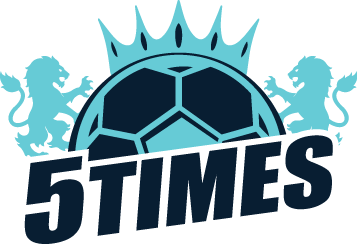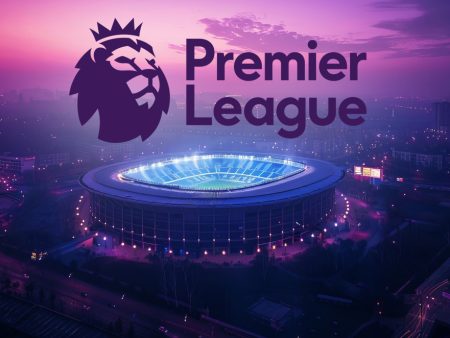The world of Premier League mascots is a brilliantly bizarre one. Whether you’re watching from the terraces or catching glimpses of them clowning around during half-time, mascots have become central to the matchday experience. From the iconic Gunnersaurus Rex of Arsenal to Manchester United’s devilish Fred the Red, every Premier League club has its own costumed character bringing joy, banter, and sometimes bewilderment to fans across the country.
This article ranks the most memorable mascots in the top flight, blending charm, design, and sheer entertainment value. If you’re curious about which club mascot rules the Premier League, read on.
Who Is The Premier League Mascot GOAT?
The term “GOAT” usually applies to players, but when it comes to mascots, there are some undeniable legends. Manchester United’s Fred the Red has been strutting around Old Trafford since the ’90s. His devilish grin, paired with the club’s nickname, has made him a staple on matchdays. On the red side of North London, Gunnersaurus Rex is equally iconic. The friendly dinosaur first appeared at Highbury and remains a fan favourite at the Emirates. His survival through Arsenal’s modern transitions shows how integral a mascot can be to a club’s identity.
What Makes A Great Mascot In The Premier League?
From design to performance, the best mascots have a personality of their own. They have to appeal to children and adults alike, interact with supporters before kick-off, and bring energy during half-time. It’s also about recognisability – a mascot like Mighty Red, representing Liverpool and based on the Liver Bird, stands out with a colour scheme that ties neatly to the club’s identity.
A great Premier League mascot should also reflect the heritage of the team. That’s why Gunnersaurus, despite being a dinosaur, is as Arsenal as Highbury and the Emirates. Whether you’re at Craven Cottage or Kenilworth Road, mascots play a subtle yet powerful role in enhancing matchday traditions.
Arsenal’s Gunnersaurus Rex: Dinosaur Royalty
Arsenal’s Gunnersaurus Rex is more than just a mascot; he’s a part of club folklore. Towering and green, this dinosaur first appeared in 1993 and was famously created by a young fan. His name alone makes him instantly recognisable in the Premier League mascot scene.
Whether it’s posing for selfies outside the Emirates Stadium or engaging with fans at half-time, Gunnersaurus has a legacy that few can rival. The mascot even survived a brief layoff during the pandemic, showing just how loved he is by Arsenal supporters.
Fred The Red: Manchester United’s Devilish Icon
Fred the Red is as Manchester United as Old Trafford itself. Representing the club’s famous red devil nickname, Fred has become a mainstay of the Red Devils’ matchday identity. With his oversized head and cheeky antics, he adds a light-hearted touch to the stadium atmosphere.
Manchester United’s Fred the Red has often appeared at charity events and schools, making him one of the most community-involved mascots in the Premier League. While United’s on-pitch fortunes fluctuate, Fred remains a reliable source of smiles.
Mighty Red: Liverpool’s Liver Bird In Costume
Mighty Red is Liverpool’s costumed ambassador, modelled after the Liver Bird and decked out in full red kit. He’s aimed squarely at the younger demographic, but there’s no denying his place in Anfield culture.
On matchdays, Mighty Red is frequently spotted rallying fans, dancing around the stadium and engaging in pre-match rituals. His appearances in Istanbul for the Champions League final and other major events have cemented his place in the mascot elite.
Moonchester And Moonbeam: Manchester City’s Intergalactic Duo
Manchester City have two mascots: Moonchester and his female counterpart Moonbeam. These blue aliens from Planet Blue Moon have been entertaining City fans for years. They fit the club’s futuristic branding, especially under the spotlight at the Etihad Stadium.
During matchdays, Moonchester and Moonbeam often compete in challenges, take part in charity events, and engage with fans in the stands. Their outer-space origin might be quirky, but it mirrors City’s ambition to reach for the stars.

Stamford And Bridget: Chelsea’s Double Trouble
Chelsea opted for not one but two mascots: Stamford and Bridget, a lion and lioness pairing that symbolises the strength and unity of the club. Often seen roaming Stamford Bridge, they’re a big hit with young Blues fans.
Their playful energy brings something extra to the Chelsea matchday experience. Between selfies and dance routines, Stamford and Bridget make sure Stamford Bridge feels like home.
Pete The Eagle: Crystal Palace’s High Flyer
Selhurst Park wouldn’t be the same without Pete the Eagle. Inspired by the club’s nickname and crest, Pete soars high both literally and figuratively. His elaborate costume is among the best-designed in the Premier League.
Often accompanied by Kayla the Eagle, a real bird once used in pre-match displays, Pete brings a unique authenticity. Crystal Palace’s connection to their mascot is deeply rooted in South London pride.
Billy The Badger: Fulham’s Black-And-White Favourite
Fulham may be known for the picturesque Craven Cottage, but Billy the Badger ensures that there’s plenty of character on matchdays too. With his slick black-and-white design, Billy reflects Fulham’s understated charm.
He’s one of the more mischievous mascots in the top flight, often caught performing wacky dances or photobombing player warm-ups. A true Craven Cottage legend.
Bertie Bee: Burnley’s Bumblebee Of The Turf
Bertie Bee is Burnley’s stripey stalwart. Despite the modest size of Turf Moor, Bertie delivers big mascot energy. Known for his over-the-top reactions and pitchside banter, he’s a cult hero in Lancashire.
Bertie once even got sent off for confronting a referee, proving that not all mascots keep things PG. His unpredictable nature has made him one of the most entertaining characters in the Premier League.
Hammerhead: West Ham’s Metallic Menace
West Ham United’s mascot Hammerhead is unlike any other – a robotic-looking figure shaped like a hammer. It’s a nod to the club’s industrial roots and nickname, the Hammers.
Seen parading around the London Stadium, Hammerhead brings a futuristic twist to the Premier League mascot mix. He might not be as cuddly as others, but he scores points for originality.

Honourable Mentions: Who Else Makes The Mascot Hall Of Fame?
- Wolfie and Wendy Wolf (Wolverhampton Wanderers): Reflecting the club’s identity and history.
- Captain Blade and Monty (Sheffield United): With pirate vibes and a nod to the Blades moniker.
- Chirpy and Lily (Tottenham Hotspur): A rooster-based duo rooted in club tradition.
- Happy Harry and Hatter (Luton Town): Bringing the spirit of Kenilworth Road alive on matchdays.
- Cherry Bear and Sammy (Bournemouth): Adding fun to the Vitality Stadium.
- Hercules and Bella (Aston Villa): Club-themed royalty that fit Villa Park’s historic aesthetic.
- Gully and Gully the Seagull (Brighton & Hove Albion): Reflecting seaside flair and the hove albion lifestyle.
- Magpie (Newcastle United): A sleek symbol of the Toon Army.
- Bee (Brentford): Another buzzing mascot keeping the West London spirit alive.
- Chang the Elephant (Everton): A unique nod to former club sponsor and community outreach.
- Conclusion: The Real MVP Of Matchday Magic
While players come and go, and managers shift between the dugouts, mascots offer consistency, warmth, and entertainment. Whether it’s Arsenal’s Gunnersaurus Rex, Liverpool’s Mighty Red, or Manchester United’s Fred the Red, each mascot in the Premier League plays a unique role in club culture.
They make children smile, ease nerves before kick-off, and give every Premier League stadium a touch of theatre. As long as there’s football, there’ll be mascots. And long may their legacy continue.
Premier League Mascots Key Takeaways:
- Gunnersaurus Rex is still the king of mascots.
- Fred the Red remains a firm fan favourite at Old Trafford.
- Mighty Red ties neatly into Liverpool’s brand and fan culture.
- Burnley’s Bertie Bee and West Ham’s Hammerhead stand out for sheer unpredictability.
- Chelsea’s Stamford and Bridget add lion-hearted charm to Stamford Bridge.
- Every Premier League mascot reflects their club’s identity in some way.
- They are vital to the matchday experience and fan connection.
- From bee costumes to dinosaurs, there’s no such thing as a “normal” club mascot.
Want more mascot rankings and behind-the-scenes football stories? Stick with us – we cover the beautiful game’s weirdest corners like no one else.












